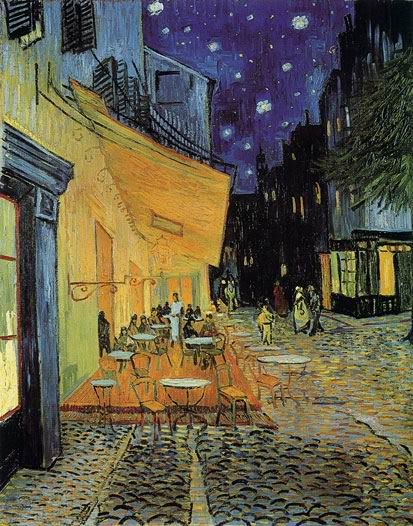Vincent Van Gogh

The painting here is called "A Pair of Shoes" by Vincent Van Gogh. I feel like those shoes sometimes. In a very real way those shoes and I are soul brothers (no pun intended). Old, worn out, scarred, scuffed and weary, they have put many a hard mile behind them and are enjoying a deserved rest. These shoes look strangely comfortable to me, as though the shoes and the wearer had become as one, and they appear to be waiting patiently for the journey to begin once again.
Vincent Van Gogh has long been one of my favourite artists. His work was much more than mere represntation, reproducing the world around him in colour and light. His work reached into the soul of the painter himself and exposed us to an inner landscape. Our own meloncholies and dreams, our fears and hopes, our simple ups and downs are displayed in his wonderful pallet and frantic brush strokes.

The painting here is called "Enclosed Field with Peasant". It is owned by the Indianapolis Museum of Art, if anyone in the neighborhood of Indiana is interested in seeing it. Van Gogh was a prolific artist. His sketches, watercolours, and paintings are many. I have seen them in Amsterdam and Paris, and I never visit London without making a beeline for the National Art Gallery and heading straight for the Van Gogh's.
Vincent Van Gogh opened the door for, and greatly influenced, that school of art called Expressionism . The deliberate distortion of reality and the use of colour and technique to portray the psychological and emotional landscape of the human condition. His use of bright and brilliant colour, coupled with his own unique vision and technique, led Vincent to produce some of the world's most treasured works of art...even though he only managed to sell one of his paintings in his lifetime.
His life as an artist is well documented in his letters to his brother Theo. The mental, emotional, and artistic travails of Van Gogh are played out in these letters. His lack of success as an artist and his failures at love and relationships, coupled with the emotional burden of deep meloncholy lows and manic highs, led to eventual breakdown and suicide. All of this is captured for all time in his work. But, more than all of this, there is pure and honest beauty.



